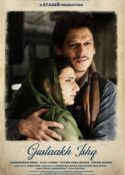 Subhash K Jha celebrates nine years of A Death In The Gunj Konkona Sen Sharma’s remarkable directorial debut.
Subhash K Jha celebrates nine years of A Death In The Gunj Konkona Sen Sharma’s remarkable directorial debut.
It’s hard to define the mood of unrehearsed foreboding and a vague sense of doom that is built into Konkona Sen Sharma’s fragile yet ferocious family-on-a-disastrous-hillstation-holiday film.
If one didn’t know better, one would classify A Death In The Gunj as a whodunit. An Agatha Christie novel condensed into two hours of layered crisp crunchy but seemingly pointless conversations where families on a lazy vacation talk nonsense, play silly games evoking dead spirits (please!) while kids and pets run around in the large crumbling family home as the house-help grumbles about the sudden surge in domestic responsibilities.
It’s a familiar scenario for a tense exploration of fissures and fractures in the joint-family system. Ms Sen Sharma doesn’t miss a beat as her keen eye for detail fills the frames with the kind of domestic familiarity and comfort that are known only to those who have spent large hours vacationing in lazy spots with their extended family.
Meet the Bakshis as they assemble in the family home in McCluskieganj. Nandu (Gulshan Deviah) , wife Bonnie (Tillotama Shome) and their little daughter Tani (Arya Sharma) accompanied by two friends Mimi (Kalki Koechlin) and Brian (Jim Serbh) and above all, Nandu’s cousin Shuti (Vikrant Massey)—dear desperate bullied yet beloved Shutu the gentle lanb of the family– have come to spend time with Nandu’s parents (Om Puri and Tanuja).
It is imperative to lay out the blueprint for Konkona’s family tree so we can make sense of the subtle unfathomable drama that unfolds leading up to an inexplicably tragic finale.
A Death In The Gunj is a film replete with resonances and echoes from the past that can never fade or grow redundant. This is a universe we have all occupied at one time or another.And there is a ‘Shutu’ in all of us…unsure, uncertain of the future, lacking in selfconfidence and fearful of failure in life… It takes an actor of infinite skills to play everyman with individualistic skills. Vikrant Massey sets a new benchmark in performing the inconspicuous common man’s extraordinary struggles to remain visible to a world that takes his presence for granted.
Vikrant has two remarkable breakdown sequences and an outstanding seduction sequence on an antique chair with the perky Kalki. It’s rare to see a director in India shoot a lovemaking scene so innovatively. As Kalki takes charge over the besotted virgin-boy’s pants and groans, we are transported into a rare firmament of furtive pleasures that leave a lasting impression.
Not that the other actors lag behind Massey. Every actor blends with virile vehemence into the multilayered fold of the plot bringing to the family tragedy a kind of heft and immediacy that we haven’t seen in a Hindi film for a long time.
Ranveer Shorey stands out from the gallery of performers. His arrogant libidinousness is celebrated in a striking dinner get-together where his wife , a simple homely woman, is treated shabbily without her being aware of it.
The year is 1979 and remarkably, the debutant director doesn’t resort to positioning popular film songs from that era to project periodicity. Her period palate is far more ambitious. Konkana Sen Sharma uses colours, fabrics, mores and mannerisms from those times without seeming to put undue stress on manner and dress.
Sirsha Ray’s camera tiptoes over these ordinary lives, seeking the romance of the routine, offering glimpses of the gorgeous in the non-descript. A Death In The Gunj tells its leisurely story with befitting skill and deftness. The upheavals on the placid surface erupt suddenly . But we are not unwarned. Kalki’s wanton sexuality and her sudden shocking behaviour in a graveyard sequence , a wife suddenly performing fellatio on her husband, and of course the unscheduled love-making on the creaky uneven chair…they all indicate imbalances of Nature that middleclass families secrete in their lives.
In that sense Shutu is not real. He is a thought too ordinary to be a metaphor, at the same time too extraordinary to be just another Everyman.
“You are beautiful, almost like a girl,” Kalki’s mercurial Mimu tells Shutu as blushes with pride.Some such oxymoronic compliment would be apt for this film. It’s beautiful yet rugged.Masculine in subject yet feminine in its delicately drawn scenes and moments.
How do we put this? Just go watch.
A Death In The Gunj, which turned 9 on June 2, went largely unnoticed . It boasted of a stellar cast. But no one knows the debutant director’s mother Aparna Sen was also part of it.
We can’t see her in the film, only hear her.
Aparna plays the film’s protagonist Shutu’s (Vikrant Massey) mother. We never see the lady. We only hear her on the phone on a distressed long-distance call with her son and we also hear her voice when Tanuja (playing Vikrant’s aunt) reads out a worried and anxious letter from Shutu’s mother.
Aparna said she was delighted to be an invisible part of her daughter’s film. “Of course that’s my voice for Shutu’s mother. But there is so much more to the film. I myself loved the film, and not because it’s made by my daughter.”
Uncannily, Aparna was heard but not seen in her own directorial debut. She had dubbed for Debashree Roy in 36 Chowringhee Lane. And now Aparna is just a voice in her daughter’s directorial debut. Though Konkona claimed her main source of inspiration was Peter Weir’s 1975 Australian film Picnic At Hanging Rock for the eerie and intangible feeling of dread in A Death In The Gunj, Konkona’s mother’s influence on her first film is quite prominent.
Not many have noticed the uncanny resemblance in mood between Konkona’s movie and her mother’s 36 Chowringhee Lane. In both the films, the protagonists are lonely, persecuted, desolate and exploited individuals. If Konkona’s Shutu lived to become old, he would probably lead a reclusive lonely life like Violet Stoneheim (Jennifer Kapoor) of 36 Chowringhee Lane.
Aparna agreed to disagree, “Both Konkona’s protagonist and mine in 36 Chowringhee Lane are lonely individuals. However, Violet in my film has more-or-less accepted her state of loneliness. Shutu is much more vulnerable. Violet accepts her exploitation with much more grace whereas Shutu reacts violently to his condition of desolation. Their destinies are different because Konkona and I are very dissimilar as directors.
Eerily in Konkona’s second directorial in Lust Stories she was a voice on the phone.








